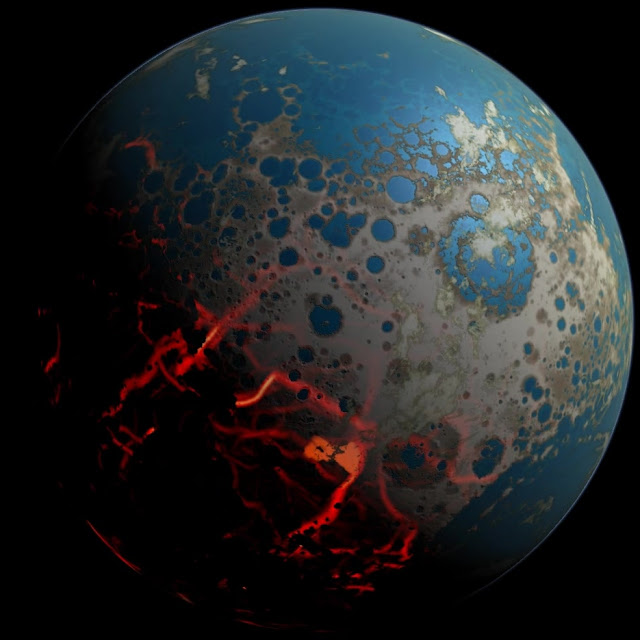Earth, 4 billion years ago
New research shows that more than four billion years ago the surface of Earth was heavily reprocessed – or melted, mixed, and buried – as a result of giant asteroid impacts. A new terrestrial bombardment model, calibrated using existing lunar and terrestrial data, sheds light on the role asteroid collisions played in the evolution of the uppermost layers of the early Earth during the geologic eon called the "Hadean" (approximately 4 to 4.5 billion years ago).
"A large asteroid impact could have buried a substantial amount of Earth's crust with impact-generated melt," said Yvonne Pendleton, SSERVI Director at Ames. "This new model helps explain how repeated asteroid impacts may have buried Earth's earliest and oldest rocks."
Terrestrial planet formation models indicate Earth went through a sequence of major growth phases: initially accretion of planetesimals – planetary embryos – over many tens of millions of years, then a giant impact by a large proto-planet that led to the formation of our Moon, followed by the late bombardment when giant asteroids several tens to hundreds of miles in size periodically hit ancient Earth, dwarfing the one that killed the dinosaurs (estimated to be six miles in size) only 65 million years ago.
Researchers estimate accretion during the late bombardment contributed less than one percent of Earth's present-day mass, but the giant asteroid impacts still had a profound effect on the geological evolution of early Earth. Prior to four billion years ago Earth was resurfaced over and over by voluminous impact-generated melt. Furthermore, large collisions as late as about four billion years ago may have repeatedly boiled away existing oceans into steamy atmospheres. Despite the heavy bombardment, the findings are compatible with the claim of liquid water on Earth's surface as early as about 4.3 billion years ago based on geochemical data.
The new research reveals that asteroidal collisions not only severely altered the geology of the Hadean eon Earth, but likely also played a major role in the subsequent evolution of life on Earth as well.
"Prior to approximately four billion years ago, no large region of Earth's surface could have survived untouched by impacts and their effects," said Simone Marchi, SSERVI senior researcher at the Southwest Research Institute in Boulder, Colorado, and the paper's lead author. "The new picture of the Hadean Earth emerging from this work has important implications for its habitability."
Large impacts had particularly severe effects on existing ecosystems. Researchers found that on average, Hadean Earth more than four billion years ago could have been hit by one to four impactors that were more than 600 miles wide and capable of global sterilization, and by three to seven impactors more than 300 miles wide and capable of global ocean vaporization.
"During that time, the lag between major collisions was long enough to allow intervals of more clement conditions, at least on a local scale," said Marchi. "Any life emerging during the Hadean eon likely needed to be resistant to high temperatures, and could have survived such a violent period in Earth’s history by thriving in niches deep underground or in the ocean’s crust.”
Image Credit: NASA's Goddard Space Flight Center Conceptual Image Lab/Simone Marchi
Explanation from: https://www.nasa.gov/ames/new-nasa-research-shows-giant-asteroids-battered-early-earth/



0 Response to "Earth, 4 billion years ago"
Post a Comment